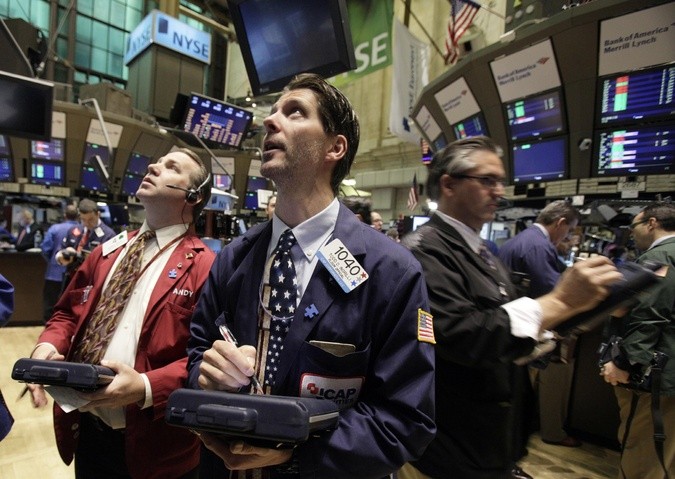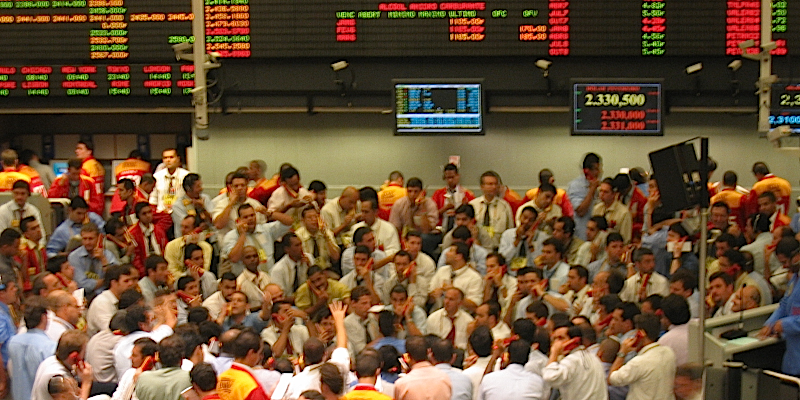Is HighFrequency Trading Good or Bad
Post on: 30 Май, 2015 No Comment

Four experts say faster is often better. But they also have concerns.
The rise of high-frequency-trading firms, which use statistics and algorithms to drive electronic-trading strategies, is transforming financial markets around the world. By some measures, such firms account for 5 of every 10 stock trades in the U.S. each day.
More in Innovations in Finance: Exchanges
Research has shown that algorithmic trading broadly makes prices less volatile and reduces the overall cost of trading. But the capacity of the high-frequency-trading firms to buy and sell large amounts of securities in fractions of a second has raised fears that ordinary investors are being left in the dust.
The Wall Street Journal gathered four academics who have studied financial markets for a panel discussion: James Angel, associate professor at McDonough School of Business, Georgetown University, and board member at Direct Edge, an electronic stock exchange; Albert Menkveld, associate professor of finance, VU University Amsterdam; Daniel Weaver, professor of finance and associate director for Whitcomb Center for Research in Financial Services, Rutgers Business School, Rutgers University; and Chester Spatt, chaired professor of finance and director of the Center for Financial Markets, Carnegie Mellon Tepper School of Business, and a former chief economist of the Securities and Exchange Commission.
These people are all optimistic that electronically driven high-frequency trading can be a benefit to markets and investors around the world, despite some concerns. One worry: that some of the human limitations the superfast trading systems are designed to overcome have in the past acted as safeguards.
Edited excerpts from their conversation follow:
Faster, Cheaper
WSJ: What does high-frequency trading mean? What are these firms doing, and to what extent have they replicated the role of floor traders?
ENLARGE
JAMES ANGEL High-frequency traders generally do the same old same old just better, faster and cheaper.
MR. ANGEL: For the most part they’re doing the same old same old—just better, faster and cheaper. The reason they have to be so fast is that most strategies are actually pretty low-tech. If you think about a strategy like market making—buy at the bid, sell at the offer, and don’t get run over by a truck when the market moves—that’s a business where you need to be very fast to update your quotes, otherwise somebody who’s faster than you will pick you off.
MR. MENKVELD: One important aspect of electronic markets is the search for counterparties to your trade. Once we started to trade electronically, this search became much easier because machines can parse quickly the different securities markets globally.
MR. WEAVER: The average high-frequency trader’s profit is 10 cents on 100 shares traded. When you have a machine, it becomes scalable and very profitable to make very small profits per trade.
MR. SPATT: A lot of the practices that high-frequency-trading firms are being criticized about are not new practices. In a traditional trading floor, there often was hidden liquidity: Traders often had orders that they weren’t directly showing as they were looking for opportunities to provide liquidity to the marketplace.
WSJ: How does it affect individual investors?
ENLARGE
CHESTER SPATT It seems to me what’s important is to allow competition and allow investors to adjust. David Aschkenas
MR. SPATT: You have a faster speed of execution. You can have executions in an instant. And the market has greater fragmentation. Even in the situation of retail orders now, a trade can be fragmented across multiple platforms. Interestingly, I also think the spreads in the markets have continued to become tighter.

MR. WEAVER: Whether or not there is more volatility in the marketplace is the issue. It’s not clear whether more volatility is being caused by high-frequency traders. Certainly there are tighter spreads, more liquidity. But there’s more price impact, and there may be more volatility in the market as well.
MR. ANGEL: The issues with volatility are always really hard to determine. How much volatility is attributable to high-frequency trading, how much is fundamental volatility, and how much is just natural noise in the trading system?
MR. MENKVELD: For fun I am a retail investor myself. One thing I noticed is that it’s hard for me to earn a spread. As soon as I put in an order, I notice that the guy I tried to undercut, the moment I refresh my screen, the guy’s right underneath me. I pull my quote and he’s back to where he was before. That’s the negative for retail investors. The positive is, with these high-frequency traders, the spreads retail investors are paying are smaller than they were before.
Human Limitations
WSJ: Should retail investors be concerned?
ENLARGE
DANIEL WEAVER Whether or not there is more volatility in the marketplace is the issue.
MR. WEAVER: They should stay away from short-term trading strategies. They are going to go up against computers and lose. But put it in perspective. IBM shares traded at about $80 on Feb. 28, 2006. If you ended up paying an extra 25 cents a share due to volatility, then you paid an extra 25 cents per share. Over the next five years IBM doubled, which impacts returns much more than the 25 cents. Investors should worry about the long-term price appreciation of stocks, not small volatilities.
MR. MENKVELD: All this uncertainty about the current environment and emphasis on the bad things creates a bad impression to people we want to participate in our markets. The way to address this is to be proactive about going into the markets and for the regulators to conduct a proper economic analysis of what happened in events like the flash crash [of May 2010]. We’re far behind in that respect. We don’t have the regulatory oversight these new markets need, and the adjustment of regulators to these new markets to bring some balance to peoples’ views.
MR. ANGEL: When you trace the wires on all these computerized platforms, sooner or later you find a person. But people respond differently than computers. While we have most of the safeguards in place, we don’t have all the safeguards that we would have in a human market. In the bad old days, when the market was overwhelmed by a wave of activity, human limitations would naturally slow the market down, because humans could only process so many orders at a time. In the current environment, if our technology gets overwhelmed, the market can fail in unpredictable ways. We saw this in the flash crash.














